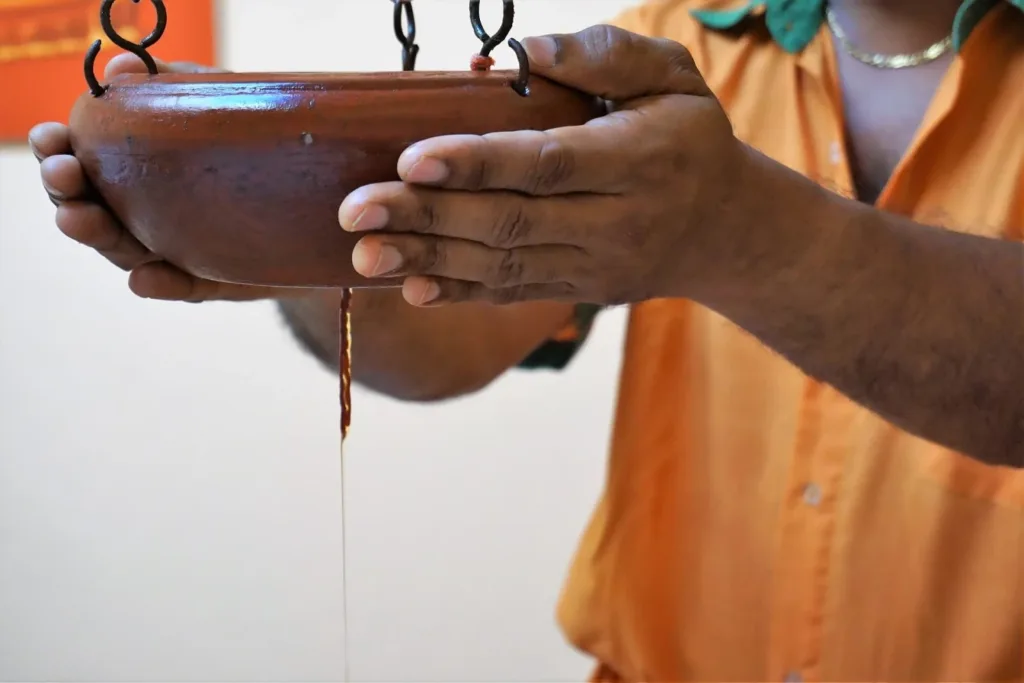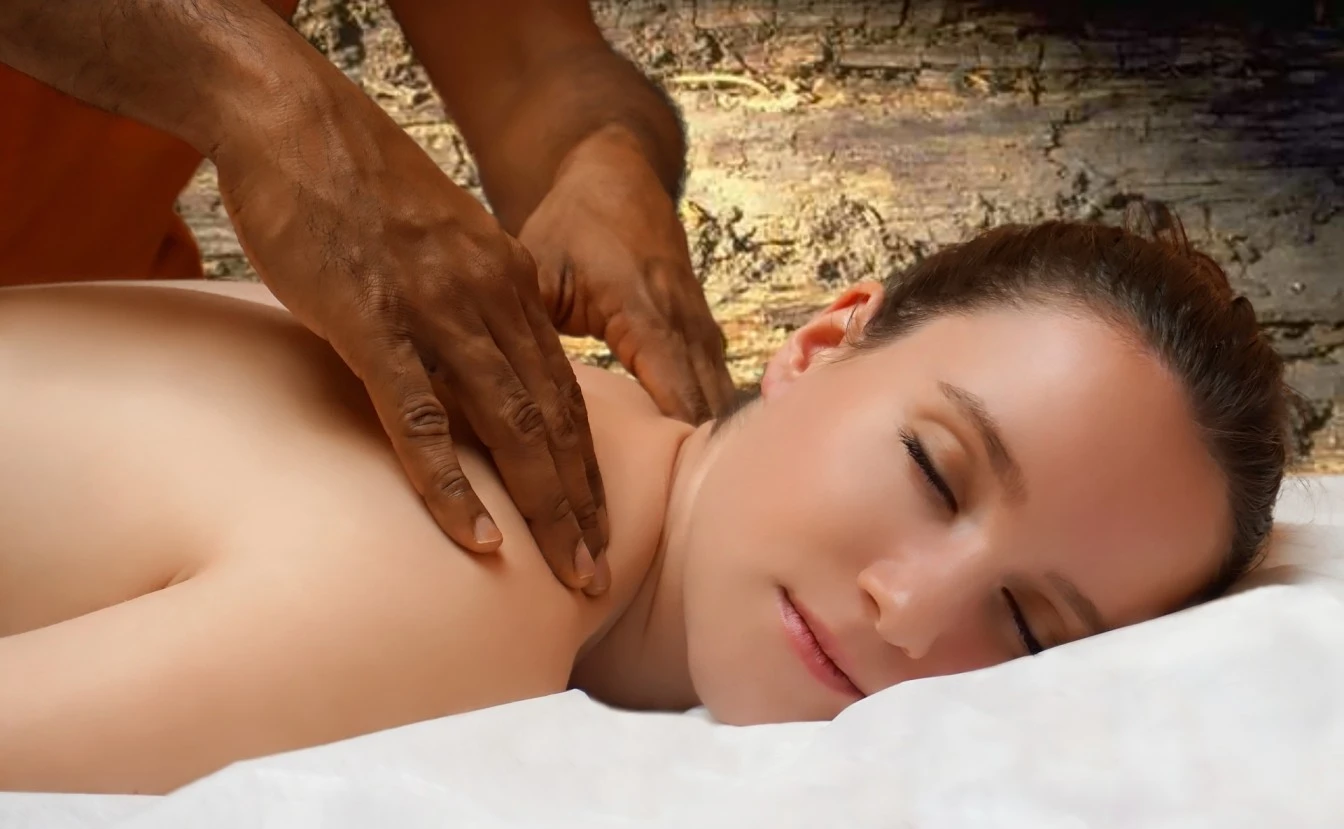Ayurveda, a holistic system of traditional medicine originating in India, has a deep-rooted connection to the concept of beauty. Derived from Sanskrit words “ayur” (life) and “veda” (knowledge), Ayurveda emphasizes achieving optimal health by balancing the body, mind, and spirit through natural practices and remedies. While its primary goal is overall well-being, Ayurveda’s principles also extend to the realm of beauty. In the context of beauty, Ayurveda recognizes that true radiance comes from inner balance and harmony. It considers each individual as unique, with a distinct combination of the three doshas—Vata, Pitta, and Kapha—which govern various bodily functions. These doshas also influence one’s skin type, hair quality, and overall appearance.

Ayurvedic Skincare Rituals
Ayurvedic skincare rituals are rooted in the holistic principles of Ayurveda, aiming to promote not only healthy skin but also overall well-being by considering an individual’s unique constitution and addressing imbalances. These rituals emphasize natural ingredients, mindful practices, and a balanced lifestyle. Here’s an overview of Ayurvedic skincare rituals.
- Determining Your Dosha: Understanding your dosha helps you choose skincare products and practices that suit your unique skin type and concerns. Vata skin tends to be dry and sensitive, Pitta skin is prone to inflammation and sensitivity, while Kapha skin can be oily and prone to congestion.
- Cleansing (Snanam): Use gentle, sulfate-free cleansers that don’t strip your skin’s natural oils. Avoid hot water as it can be drying. Opt for lukewarm water to maintain skin’s hydration.
- Exfoliation (Lepana): Exfoliate 2-3 times a week to remove dead skin cells. Mix finely ground natural exfoliants with aloe vera gel or milk to create a paste. Gently massage in circular motions, focusing on areas prone to congestion.
- Toning (Tarpana): Ayurvedic toners balance the skin’s pH, calm inflammation, and prepare your skin for further treatments. Rose water is cooling for Pitta, while aloe vera suits Vata and Kapha.
- Facial Massage (Mardana): Warm a small amount of dosha-specific oil in your palms and massage your face, neck, and décolletage. Vata benefits from warming oils like sesame. Pitta benefits from cooling oils like coconut. Kapha benefits from lighter oils like sunflower.
- Steam (Swedana): Boil water, add Ayurvedic herbs, and let it steep. Drape a towel over your head and the bowl, creating a steam tent. Steam for 5-10 minutes to open pores, allowing for deeper cleansing.
- Masks (Lepa): Choose masks based on your skin’s needs. For Vata, use hydrating ingredients like honey and avocado. For Pitta, opt for cooling ingredients like yogurt and cucumber. For Kapha, use cleansing and astringent ingredients like clay and rosemary.
- Moisturization (Abhyanga): After cleansing and toning, apply a thin layer of dosha-specific oil. Gently massage using upward strokes. The warmth of the oil and massage promotes circulation and nourishment.
- Sun Protection: Use natural sunscreens with zinc oxide or titanium dioxide to shield your skin from UV rays. Alternatively, apply a light layer of Ayurvedic oils with natural UV protection, like sesame oil.
- Nighttime Routine: Cleanse your face to remove makeup and impurities. Follow the same toning and moisturizing steps to support your skin’s rejuvenation during sleep.
- Diet and Hydration: Consume foods that balance your dosha and support your skin. For Vata, include warm and nourishing foods. For Pitta, choose cooling foods like cucumber and mint. For Kapha, focus on light, detoxifying foods.
- Mindful Practices: Engage in mindfulness practices to manage stress, as it can negatively affect your skin. Yoga, meditation, and deep breathing promote relaxation and overall well-being.
- Sleep and Rest: Prioritize 7-9 hours of quality sleep each night. This allows your skin to repair and regenerate, contributing to a healthy complexion.

Haircare in Ayurveda
Haircare in Ayurveda is deeply rooted in the belief that healthy hair is a reflection of overall well-being. Ayurvedic haircare emphasizes natural ingredients, personalized treatments, and a holistic approach to achieve strong, lustrous, and balanced hair. Here’s an in-depth look at haircare the Ayurvedic way.
- Determining Your Hair Type and Dosha: Just as with skincare, understanding your hair type and dosha (Vata, Pitta, Kapha) helps tailor your haircare routine. Vata hair is often dry, Pitta hair can be prone to inflammation, and Kapha hair might be oily or prone to dandruff.
- Scalp Massage (Abhyanga): Regular scalp massage with warm Ayurvedic oils stimulates blood circulation, nourishes hair follicles, and promotes relaxation. Use dosha-specific oils such as coconut, sesame, or brahmi oil.
- Choosing Ayurvedic Shampoos and Cleansers: Opt for mild, sulfate-free shampoos containing natural ingredients like amla, shikakai, and reetha. These herbs gently cleanse the hair without stripping it of natural oils.
- Conditioning and Nourishing Masks: Use herbal hair masks to condition and nourish your hair. Amla, henna, bhringraj, and neem are popular Ayurvedic ingredients known for their hair-enhancing properties.
- Oil Treatments (Murdha Taila): Apply warm oil to your hair and scalp, leaving it on for a few hours or overnight. Herbal oils can be customized based on your hair’s needs. For example, neem oil addresses dandruff, while brahmi oil promotes hair growth.
- Herbal Rinses (Anu Taila): After shampooing, rinse your hair with herbal infusions. For example, rinsing with a solution of amla or hibiscus can add shine and strength to your hair.
- Balancing the Scalp (Shiro Abhyanga): Just as facial skin needs balance, the scalp also requires equilibrium. Use herbal pastes or oils to balance excess oiliness or dryness on the scalp.
- Diet and Hydration: Consume a nourishing diet rich in vitamins, minerals, and proteins to support hair health. Drinking plenty of water and herbal teas also contributes to hydration.
- Stress Management: Stress can lead to hair problems. Practice stress-reduction techniques like yoga, meditation, and deep breathing to promote overall well-being and healthy hair.
- Gentle Hair Care Practices: Avoid excessive heat styling, tight hairstyles, and harsh chemicals that can damage hair. Use gentle hair accessories and tools to prevent breakage.
- Regular Trims: Regularly trim your hair to get rid of split ends and promote healthy growth.
- Ayurvedic Hair Masks and Pastes: Experiment with homemade hair masks and pastes using Ayurvedic herbs such as amla, hibiscus, fenugreek, and yogurt. These treatments address various hair concerns and promote shine, strength, and growth.
- Natural Drying: Allow your hair to air dry whenever possible, as excessive heat from hair dryers can damage hair fibers and lead to dryness.
- Maintaining Sleep Hygiene: Prioritize sufficient sleep to aid in hair regeneration and overall health.
Ayurvedic haircare is a journey that requires patience and consistency. As with any new routine, start gradually and observe how your hair responds to different treatments. If you’re uncertain about your dosha or specific hair issues, consider consulting an Ayurvedic practitioner for personalized guidance.
An Ayurvedic diet for glowing skin
An Ayurvedic diet for glowing skin is centered around promoting internal balance, supporting digestion, and nourishing the body with foods that align with your dosha. This approach believes that healthy, radiant skin is a reflection of a well-functioning digestive system and overall well-being. Here’s a comprehensive guide to adopting an Ayurvedic diet for glowing skin.
- Understand Your Dosha: Knowing your dosha helps you choose foods that are in line with your body’s constitution. Vata types might benefit from warming and grounding foods, Pitta types from cooling and hydrating foods, and Kapha types from light and stimulating foods.
- Balanced Meals: Including all six tastes in your meals ensures that you’re providing your body with a range of nutrients and supporting proper digestion. For example, a meal might include grains (sweet), leafy greens (bitter), and a touch of lemon juice (sour).
- Seasonal Eating: Consuming foods that are in season and locally sourced aligns with nature’s rhythms and provides you with fresher and more nutrient-rich options.
- Hydration: Sip warm water throughout the day to support digestion and cleanse the body. Herbal teas like ginger tea aid in digestion and promote circulation.
- Spices: Incorporate digestive spices into your cooking. Turmeric is anti-inflammatory, cumin aids digestion, coriander cools the body, and ginger boosts metabolism.
- Healthy Fats: Ghee, coconut oil, and olive oil are nourishing fats that support skin health, lubricate the body, and aid in absorption of fat-soluble vitamins.
- Fruits and Vegetables: Opt for colorful fruits and vegetables rich in antioxidants and vitamins. Amla, a potent source of vitamin C, can be consumed fresh or as a supplement.
- Whole Grains: Whole grains are rich in fiber and complex carbohydrates, providing sustained energy and supporting digestion.
- Proteins: Plant-based proteins like lentils, beans, and nuts offer amino acids necessary for tissue repair and overall skin health.
- Dairy and Dairy Alternatives: Choose dairy or dairy alternatives based on your dosha and digestive tolerance. Ghee, if well-tolerated, is considered beneficial for skin health.
- Avoid Processed Foods: Processed and packaged foods often contain additives and preservatives that can negatively impact digestion and skin health. Opt for fresh, whole foods instead.
- Mindful Eating: Eating slowly, savoring each bite, and paying attention to your body’s hunger and fullness signals can improve digestion and prevent overeating.
- Timing of Meals: Following a consistent meal schedule allows your digestive system to function optimally. Avoid heavy meals close to bedtime to promote better sleep.
- Herbal Teas: Ayurvedic herbal teas like tulsi, chamomile, and ginger can aid digestion, reduce inflammation, and promote relaxation.
- Avoid Excessive Spicy or Sour Foods: Pitta types should moderate spicy and sour foods to prevent excessive heat in the body, which can lead to skin irritations.
- Cooking Methods: Gentle cooking methods like steaming, sautéing, and stewing retain the nutritional value of foods and are easier for digestion.
- Listen to Your Body: Your body’s responses to different foods can provide valuable insights. If you experience discomfort or imbalances after eating certain foods, adjust your diet accordingly.
Ayurvedic diet is not about strict rules but rather about finding a balance that suits your individual needs. Consulting with an Ayurvedic practitioner can offer personalized guidance tailored to your dosha and skin concerns.
Click here to know how to use Multani Mitti Facepack.










